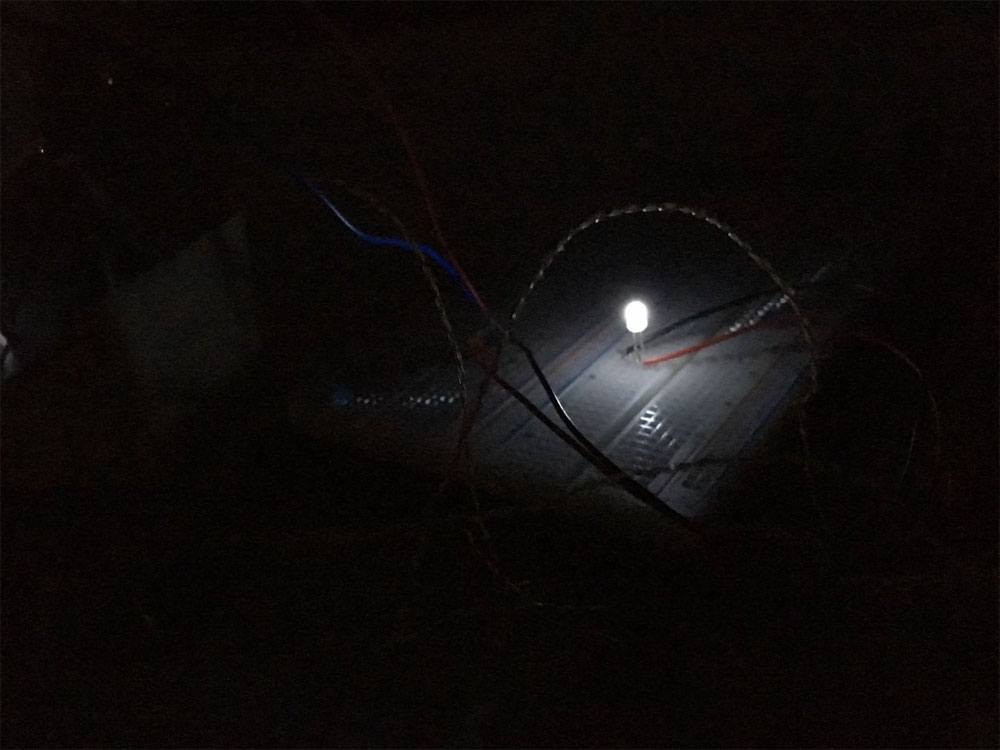
Device Generates Renewable Electricity from Cold Night Sky
An inexpensive thermoelectric device demonstrated the ability to power an LED at night by harnessing the cold of space to generate electricity. Such a device could be used for power generation in remote locations and to produce renewable electricity at night, when lighting demand is at its peak.
Scientists from the University of California, Los Angeles (UCLA) and Stanford University built a thermoelectric generator and coupled the cold side of the module to a sky-facing surface that radiated heat to the cold of space. The warm side of the module was heated by the surrounding air, enabling electricity generation at night.

A thermoelectric generator harnesses temperature differences to produce renewable electricity without active heat input. Here it is generating light. Courtesy of Aaswath Raman.
The device consisted of a polystyrene enclosure covered in aluminized mylar to minimize thermal radiation and an infrared-transparent wind cover. The researchers placed it on a table 1 meter above roof level on a clear winter night. The device drew heat from the surrounding air and released it into the night sky through a simple black emitter. When the thermoelectric module was connected to a voltage boost convertor and a white LED, the researchers observed that it passively powered the light. They measured its power output over six hours, finding that it generated as much as 25 mW of energy per square meter — an amount sufficient to power an LED.

A schematic of a thermoelectric generator that harnesses temperature differences to produce renewable electricity without active heat input. Courtesy of Aaswath Raman.
Because the radiative cooler consists of a simple aluminum disk coated in paint and all other components can be purchased off the shelf, the researchers believe the device could be scaled for practical use. The amount of electricity it generates per unit area remains relatively small, but the researchers predict it could be made 20 times more powerful with improved engineering, such as by suppressing heat gain in the radiative cooling component to increase heat-exchange efficiency, and by operation in a hotter, drier climate. Pathways to performance greater than 0.5 W per square meter exist, the researchers said, and can be achieved using currently available commodity components.
“Our work highlights the many remaining opportunities for energy by taking advantage of the cold of outer space as a renewable energy resource,” professor Aaswath Raman said. “We think this forms the basis of a complementary technology to solar. While the power output will always be substantially lower, it can operate at hours when solar cells cannot.”
The research was published in Joule (https://doi.org/10.1016/j.joule.2019.08.009).
Published: September 2019